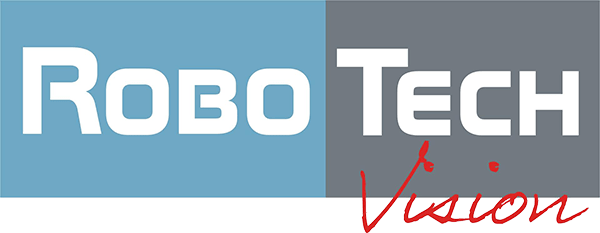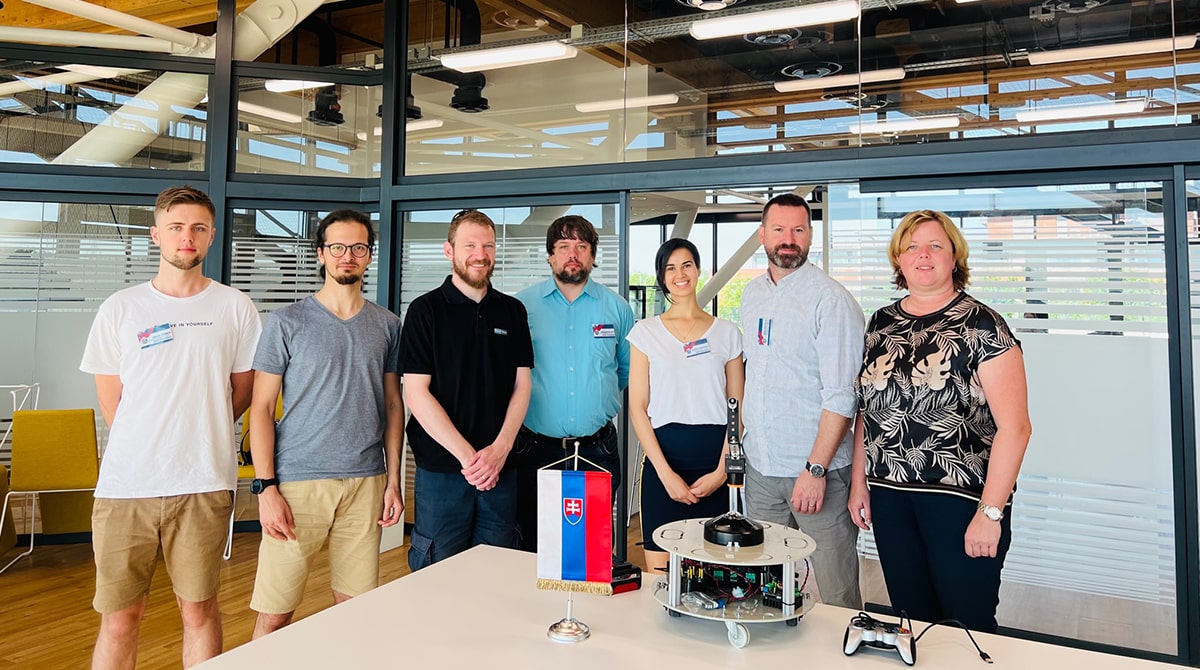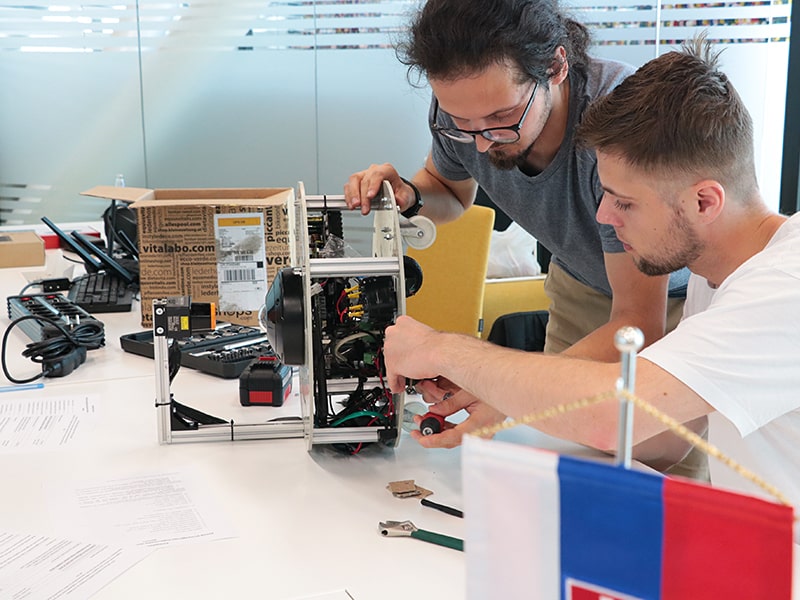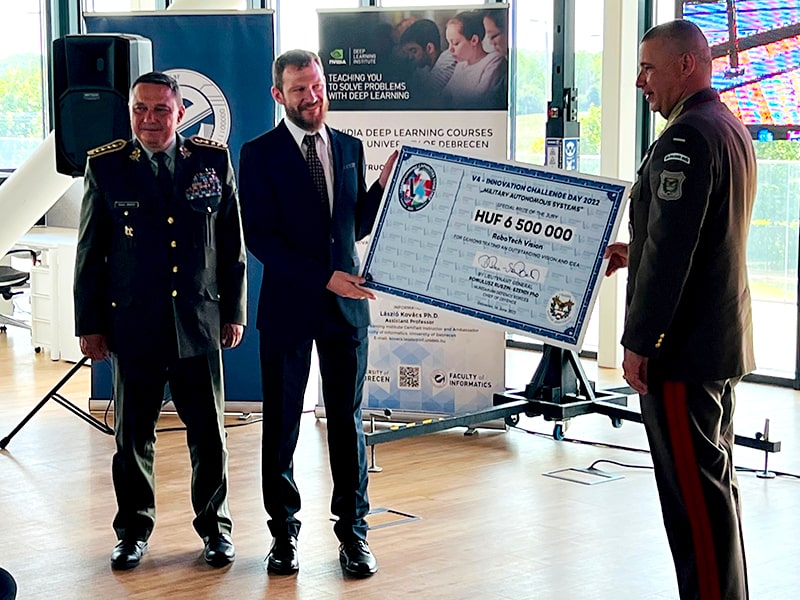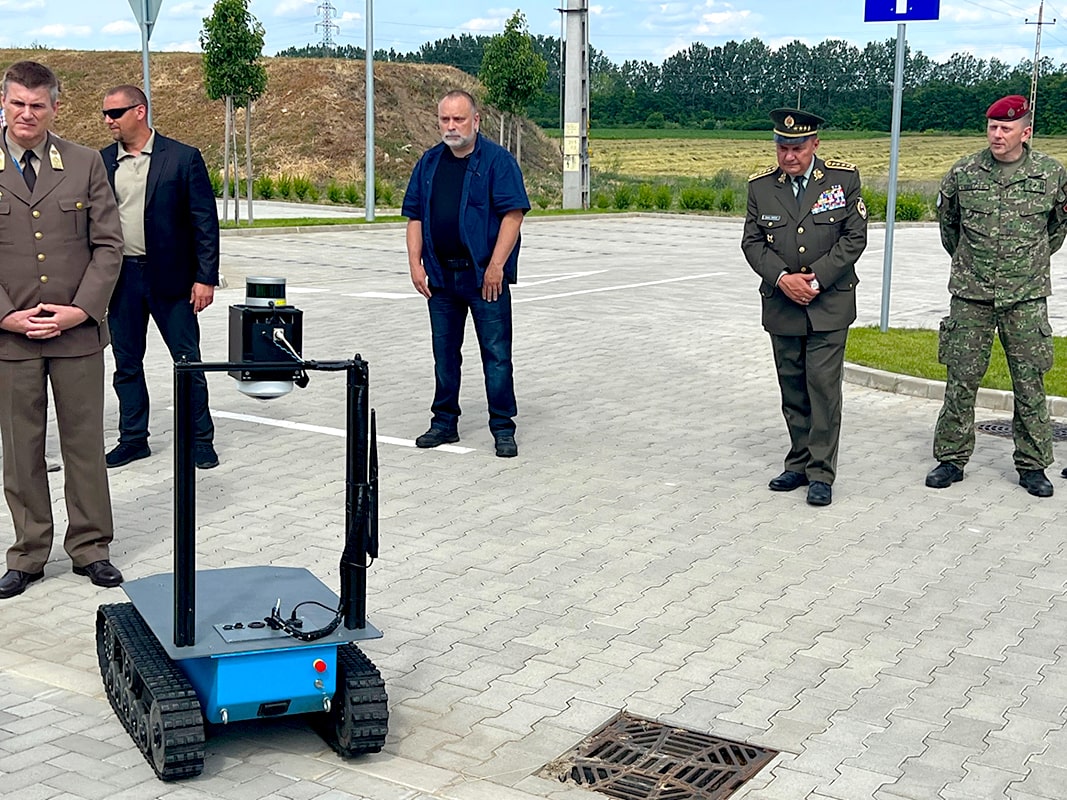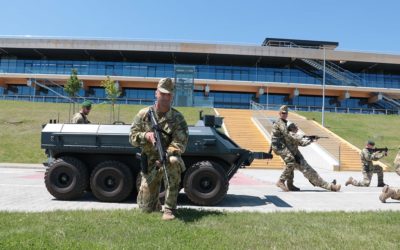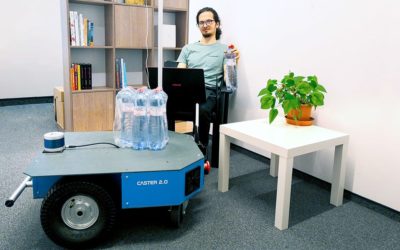LATEST POSTS
RoboTech Vision has been granted a national defense project funded by MDSR
RoboTech Vision has been granted a national defense project funded by MDSRFebruary 27, 2023 | News After RoboTech Vision was selected by the Ministry of Defense of the Slovak Republic to present its solutions at the V4 security discussions last...
Examples of artificial intelligence use: The robot recognizes faces and distributes drinks
Examples of AI use: The robot recognizes faces and distributes drinksMarch 23, 2022 | Development Artificial intelligence has a wide range of uses. It can help people to sort data, help with image processing and automate various other processes....
Autonomous navigation and charging. We develop docking system for mobile robots
Autonomous navigation and charging. We develop docking system for mobile robotsDecember 21, 2021 | Development Docking is an important part of autonomous navigation. Without it, robots would not be completely self-sufficient. RoboTech Vision is...
